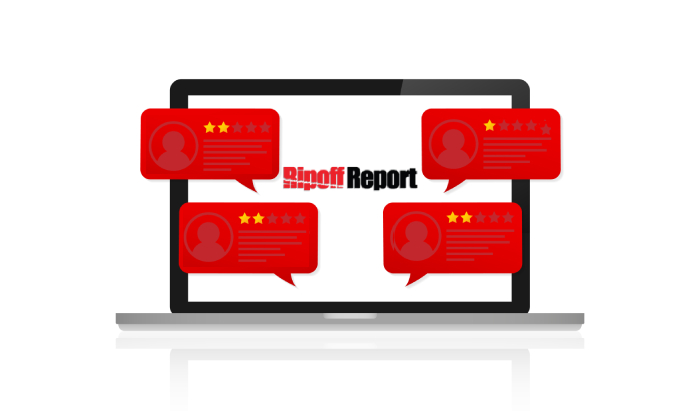
Can You Remove a Ripoff Report Complaint against Your Business?

Although Ripoff Report (ROR) has seen a huge decline in rankings since last November, it nonetheless has the potential to damage business if a complaint against your brand happens to land there. From a reputation management and SEO perspective, I’ve had the distinct displeasure of dealing with Ripoff Report while working with various clients in all kinds of industries over the past decade. Following are a few suggestions for dealing with Ripoff Report, although none of them will be the silver bullet that business owners likely are seeking.
What is Ripoff Report?
First, a little background: This “review site” is particularly malicious and damaging because it offers no real recourse to small business owners, and in the past, it has demonstrated an almost-freakish power to show up in Google search results. According to Forbes contributor Cheryl Conner, “whether the allegation is personal or related to business, the nightmare that seems to strike the most fear is an appearance on Ripoff Report.”
Unlike Google or Yelp, ROR only publishes negative reviews instead of a mix of good and bad reviews, and it has no terms of service or dispute procedure that allows you to file for a takedown of false or libelous reviews. The platform does offer a “rebuttal” that only allows business owners to respond to the review (be warned: responding actually can cause the review to become more visible in search results). Also for $2000, the site apparently has a paid “VIP arbitration” / “Corporate Advocacy” feature that has been referred to as “extortion” by many in the SEO and reputation management industries, and it doesn’t really guarantee any results beyond “arbitrating” with the originator of the complaint.
Don’t do either of these things! They’re a waste of time and money; more importantly, they won’t get the fraudulent complaint removed.
Suing the site itself also is fruitless; Ripoff Report has gone to court time and time again and won because it’s more or less protected under the “Federal Communications Decency Act,” which broadly protects corporate free speech and user generated content. Additionally, while you may be able to sue the false complainer for damages, ROR doesn’t usually let these parties remove the reports once they’ve been posted.
What Can You Do about Ripoff Report?
So what can a business owner do in response to a Ripoff Report? There’s no perfect solution, but here are some things you can try:
- Bury the Ripoff Report Results in Search: You’ll need to find an online reputation management (ORM) company or SEO-savvy PR firm that specializes in white-hat ORM SEO tactics. These firms can’t remove the Ripoff report review, but they can use offsite blogger outreach and linkbuilding tactics to promote positive, high-authority content about your business that has been optimized to bury the Ripoff Report complaint on page 2 or lower. Of course, potential customers may still find the review, but only a very small percentage of the are bound to visit page 2 or beyond. There’s an entire industry of reputation management and SEO companies — Irvine Ca.’s Reputation management consultants, SEOOP, ReputationDefender.com, and a slew of others — who will do this kind of work. Just be warned that their services don’t usually come cheap, and search algorithms change all the time, so a buried result could potentially become unburied if ranking factors change.
- Get a Court Order and File a Takedown with Google: If you can prove in court that your Ripoff Report is defamatory and untrue in nature, then Google typically will comply and delist the complaint from its search index. To my knowledge, the search giant doesn’t charge for this, but you’ll end up eating the costs of litigating the entire case. Also, some industry observers have noted that ROR will sometimes move the delisted review to a new URL, which causes the review to show up back in search results and begin ranking all over again. Although the original court order should still work in theory, enforcing it would probably require closely monitoring the search results and proactively reaching out to Google to again get the complaint delisted.
Assuming your business has the resources available, the most effective approach would probably be to combine both methods. Bury the report while you’re in court litigating to get a takedown, then get the complaint delisted using the court order once it’s obtained. If and when the report re-emerges, the cycle of burying the result and getting it removed starts over again, like a game of digital whack-a-mole.
To prevent future ROR complaints, SEJ also recommends that brands consider re-evaluating their business practices. Suggested areas of focus include providing stellar service (thereby increasing the chance of building brand advocacy and receiving a good review), refunding unhappy clients, monitoring and responding to reviews, and even potentially revising the brand’s business model.
Is there Any Hope?
There are some promising signs that some of this may change — many hope that Google will eventually start having to use a more sophisticated removal system that can’t be so easily subverted, and some legal commentators have theorized that ROR has crossed the boundaries that protect its speech by intentionally making delisted complaints visible in search again. Recent changes in the SERPs also indicate that Google has begun to algorithmically devalue and demote ROR’s search engine rankings.
So there is some hope. But in the meantime, business owners are only left with limited recourse. Unfortunately, this is the reality of trying to remove a Ripoff Report. If you truly want it gone, then it’s going to be an ongoing process that requires a lot of vigilance, resources, and no small amount of effort.
Reputation Monitoring Services for SMBs
Not much can be done to directly remove a Ripoff Report listing. But If you’re interested in building your business’ reputation online, Mediagistic’s digital marketing team can help. Available solutions include reputation management and monitoring services for most major review platforms. Contact us today to learn more about how we can help.
Eddie Childs is the Inbound Marketing Manager for Mediagistic. His writing has been published by a range of websites and publications including Copypress.com, Jambase.com, NFLSoup.com, FootballNation.com, and Boating World, KnowAtlanta, Men’s Book, Cobb in Focus, TCL, Blush, Charged Electric Vehicles, Business to Business, and Catalyst magazines. Follow him on Twitter and connect with him on Linkedin.
Images via Thinkstock
You May Also Like

Call Management Fundamentals: How to Convert Calls into Appointments & Sales for Your Dealership
October 4, 2024Your advertising and marketing efforts are likely to generate inbound phone calls for your business. In fact, if your campaigns are going… Continue Reading Call Management Fundamentals: How to Convert Calls into Appointments & Sales for Your Dealership…

5 Easy Ways to Make Unused Co-op Dollars Work for Your HVAC Business
September 27, 2024Is your HVAC business ready to make the most of this year’s unused co-op dollars? At Mediagistic, we frequently see a flurry… Continue Reading 5 Easy Ways to Make Unused Co-op Dollars Work for Your HVAC Business…

Maximize Your FSM Software: 7 Must-Ask Questions for Contractors
September 24, 2024In the HVAC industry, efficiency and customer satisfaction are the driving forces for growing your business. So fully utilizing your Field Service… Continue Reading Maximize Your FSM Software: 7 Must-Ask Questions for Contractors…